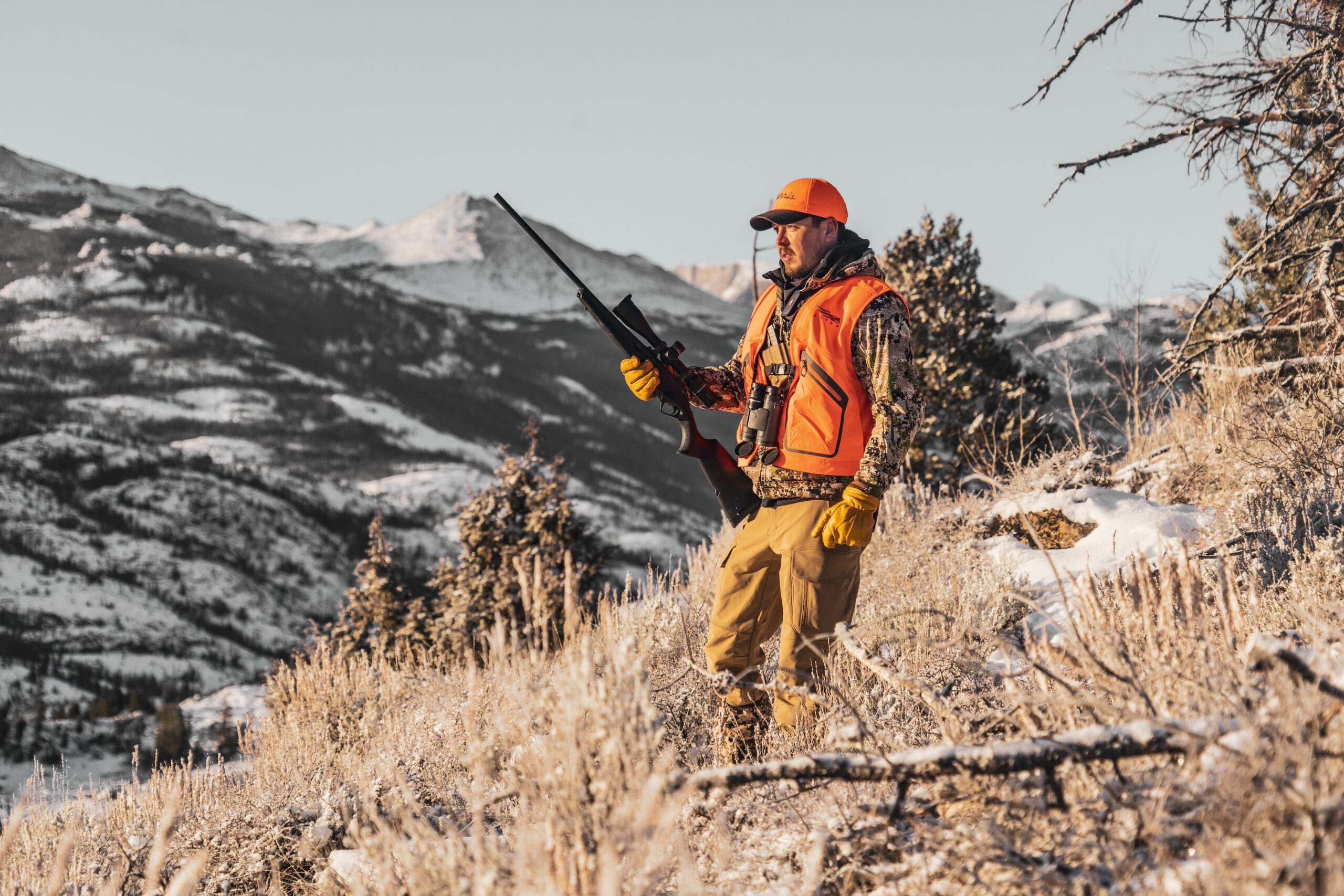There is no question that “long distance” is one of the hottest and most disputed phrases in the modern shooting world. In fact, it seems as if most everything new is geared toward this concept—be it rifles, optics, or bullets.
Achieving greater accuracy at longer distances is certainly a noble pursuit, and it has fueled many of the innovations we enjoy in our shooting gear today. That potential long-range accuracy, though, must always be tempered by practicality especially when it comes to hunting. Just because you have the tools to reach out farther doesn’t necessarily mean you should. Sure, if you are trying to ring steel at way-out-there distances, go right ahead. But in hunting scenarios, it’s not about distance; it’s about a quick and ethical kill. One confident, precise shot and done is the objective…always.
That said, the techniques and technologies that shooters and manufacturers have developed over the years to achieve accurate shots at ranges exceeding the norm have definitely improved the accuracy potential for hunters, even for those who limit their shots to under, say, 300 yards. At that distance, the popular .308 Win 150-grain bullet, for example, can drop a solid 10-14 inches off a 100-yard zero. One thing we should all agree upon, with the tools available today, when an ethical kill is on the line; Kentucky windage isn’t good enough.
The old-school way to deal with drop compensation was to “hold a foot high” or “put the crosshairs on his back.” More discerning and practiced hunters learned to “dial-in” their shots—a practice made easier today thanks to the long-range shooting wave and scope manufacturers that are, more and more, adding target-style turrets to their optics. But even with more long-range-influenced optics, it takes a commitment on the part of the hunter to learn the techniques of drop compensation and the ability to execute it under stress in dynamic field conditions. More than a commitment, it’s a responsibility. Not always easy.

One optics company in particular, Burris Optics, has worked hard to keep pace with increasingly sophisticated shooter expectations and the foundational gear that continues to push the accuracy potential envelope. Perhaps the biggest leap of all for Burris is the growing popularity of electronic-augmented optic systems; systems that have merged traditional, high-end optic manufacturing with the latest ranging and ballistic technology.
In short, rocket science meets the big game hunting rifle.
Three ready examples of this new breed of electronic hunting optics can be found in the Burris lineup—the Eliminator series and the new Veracity PH, and the Oracle 2 and Oracle X archery sights.
Actually, electronic optics are not new to Burris. In 2006, the company brought to the U.S. marketplace its first rangefinding riflescope called the Burris LaserScope. That initial entry into the brave, new world of electronic riflescopes has since transitioned to the significantly more advanced Eliminator series.
Today’s Eliminator IV and Eliminator V have steadily advanced electronic optic technology and capabilities to provide hunters with everything they need to make precision shots at game across the hunter’s comfortable shooting range. Both riflescopes feature an integrated laser rangefinder that not only provides the distance to target out to a remarkable 2,000 yards, but also works with an internal ballistic database to deliver a precise aiming solution—all with the push of a single button. With your custom load data programmed into the scope, simply push the range button to get the distance to target. The Eliminator will then present the distance and the windage offset on the heads-up display, along with an illuminated holdover dot on the Burris X96 reticle. The holdover dot is then placed on the target and you’re ready to take the shot. It’s that easy. No math and no “guesstimating” where to hold. The goal is to “Eliminate” the guesswork and focus on proper shooting technique.
The Veracity PH represents an entirely new branch on the electronic optics family tree—one that blends conventional drop compensation dialing with an industry-first micro-precision (1/10 MOA) elevation knob linked to the integrated digital heads-up display. What’s more, the system is effortlessly programmed via the Burris Connect app on your phone, allowing you to input ballistic data from factory or custom loads to ensure exact ballistic calculations.

How it works is ingeniously simple and intuitive, providing assurance that your steady, controlled shot will be on target. It is the easiest three steps you’ll ever take to drop big game within your comfort zone.
Step One: range the target with your rangefinder.
Step Two: rotate the Burris PĒK (Programmable Elevation Knob) until the distance (offered in yards, meters, or MOA) in the heads-up display equals the ranged distance.
Step Three: place the Wind MOA Front Focal Plane reticle on the target.
That is all there is to it. The rest is up to the shooter to demonstrate good technique. Burris’ motto is “Train Far, Hunt Responsibly, Don’t Miss.”
As with other Burris electrooptics, you don’t have to refer to dope cards or do math-on-the-fly to get your firing solution. Just range, dial the clickless PĒK elevation turret, and shoot with confidence. And if you are worried about a failing battery when you’re deep in the wilderness, don’t be. The Wind MOA Front Focal Plane reticle is calibrated for the average big game caliber at 200, 300, and 400 yards with a 100-yard zero, so the Veracity PH can always be used even without battery power.
As you can see by these two examples, electronic optics should not be daunting, and they certainly have a role in today’s hunting environment. Whether you are an experienced long-range shooter or someone looking for a precise aiming solution for typical hunting distances, combining high-quality optics with an advanced yet easy-to-use ballistic drop compensation system can offer the precise aiming solution you need, even in challenging conditions.
Remember…it’s not about the distance; it’s about accurate shot placement and a quick, ethical kill, and as Burris says, “Train Far, Hunt Responsibly, Don’t Miss.”
